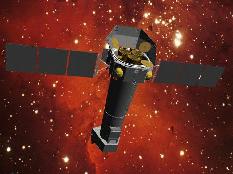 |
XMM |
 |
XMM |
 Contents
ContentsIntroduction
The Reflection Grating Arrays (RGAs)
The Focal-plane Cameras (RFCs)
Links to further information
 Introduction
Introduction

Each instrument incorporates an array of reflection gratings (the RGAs) placed at the exit of the X-ray mirrors: the gratings reflect roughly half of the X-ray light to an array of nine detectors offset from the telescope axis; the remaining light passes through undeflected to the European Photon Imaging Camera (EPIC) located at the telescope primary focus. The RGS instruments are following a circle to ensure that there are no image distortions. This is called the Rowland circle.
 Reflection Grating Arrays (RGAs)
Reflection Grating Arrays (RGAs)
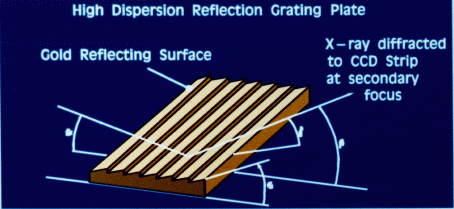 | The effect of reflection gratings on the incoming light is to disperse it, much as a prism splits optical light into its component colours, so that the spectrum of a point source will become an illuminated strip across the nine detectors. |
| Here is a photograph of the RGAs mounted on an actual mirror module: The golden cylindrical structure at the bottom is the X-ray mirror module. The RGAs are sitting on their own support structure (the grey-ish structure on top of the mirror) waiting for the light to enter through the mirror, from the bottom. | 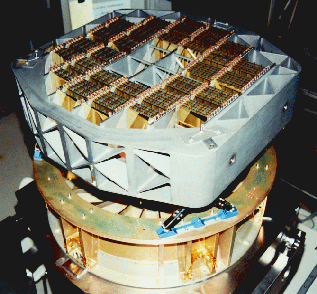 |
 |
Here, the RGAs are illuminated with optical light. Note how the light has been dispersed into a strip of colours. |
 RGS focal-plane cameras (RFCs)
RGS focal-plane cameras (RFCs)
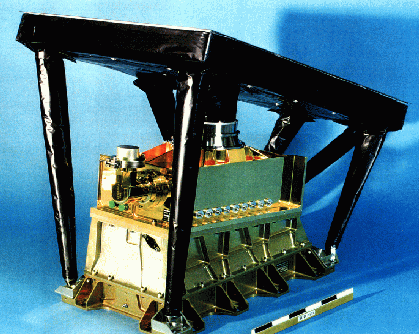 |
A more detailed view of an RFC is provided in the following photo. Here,
one can see several components of the RGS hardware, including the radiator
with its struts (black) and the camera's metal casing (golden). In this configuration, the light would enter from the bottom to illuminate the CCDs. |
And here's an image of the inside of one of the RFCs, showing the mounts for the 9 CCDs:
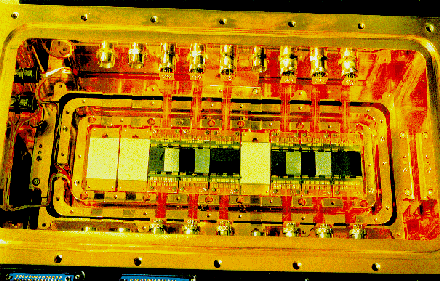
 Further Information
Further InformationA description of the (expected) scientific performance of XMM and its instruments is provided in the XMM Users' Handbook.
The ESTEC pages also have the information about the responsibilities of each institute towards the construction of the RGS.
Check out the MSSL RGS www pages.
Have a look at the ESTEC "Building XMM" web pages - they have many more RGS photos for you to look at but be warned - they can take a bit to download! They are worth the wait though.
The American contribution: Columbia (Very technical), Lawrence Livermore National Laboratory (LLNL)
Find out more about the other XMM instruments: Back to the XMM schematic view.
These pages are adapted from various sources, mainly from the ESTEC page "Building XMM" and the Mullard Space Science Laboratory.
Various parties require acknowledgement for the photo material. Particular thanks are due to the XMM Project team at ESTEC, Centre Spatial de Liege, Medialario, Dornier, Max-Planck-Institut für extraterrestrische Physik (MPE) and the Space Research Organization of the Netherlands (SRON), Utrecht.
Last updated: Thu Mar 4th 1999